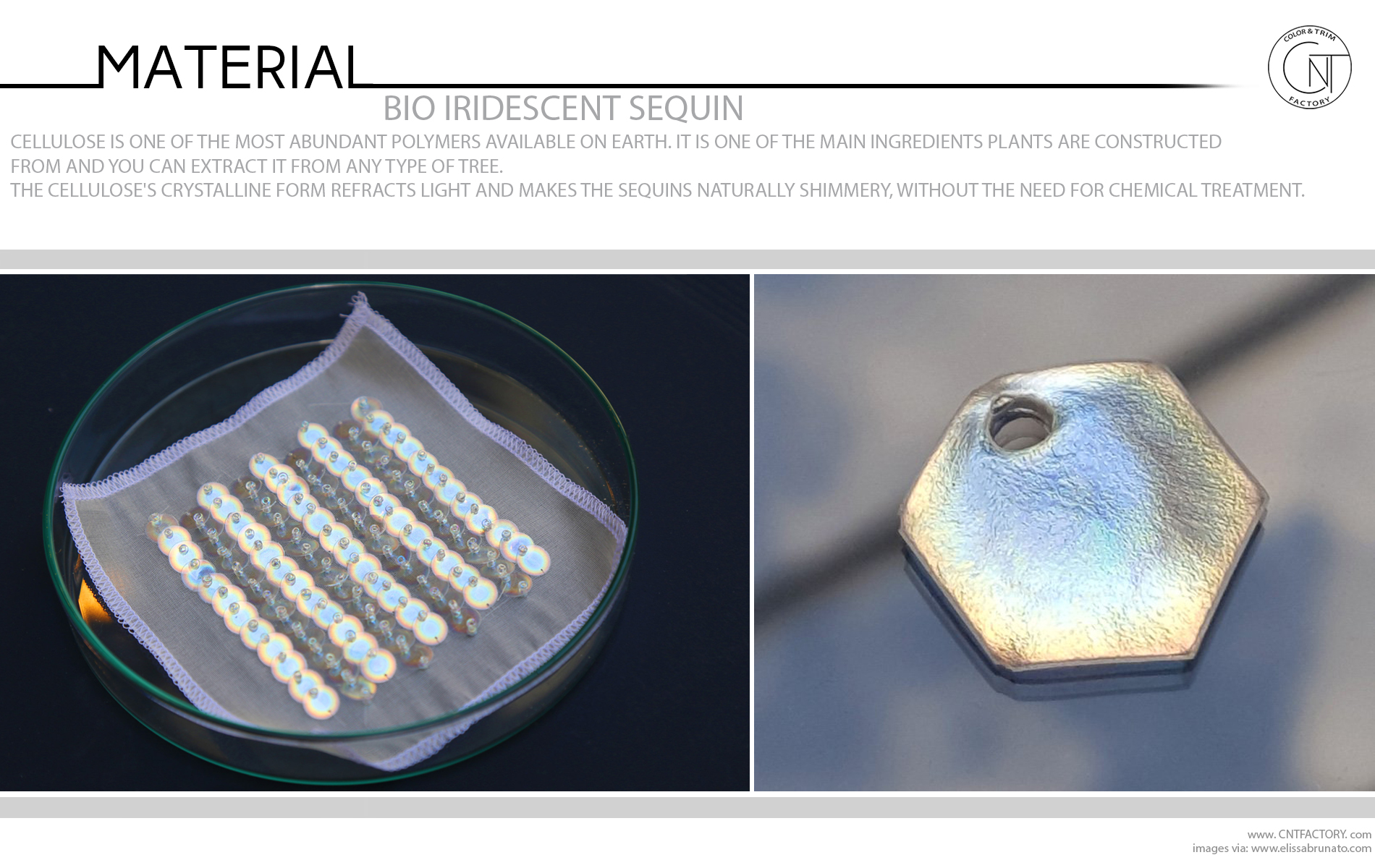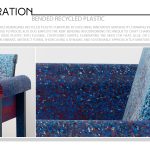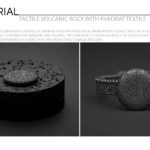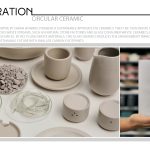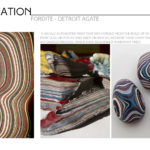Sorry, this content is for members only.
Join To View ThisRelated Post: Regenerated Nylon ECONYL® / Recycled Plastic by Ecobirdy / Sulapac® Biodegradable Material
Designer, Elissa Brunato, points out that it is the optimal moment to re-envision the origin of materials that are currently petroleum-derived to initiate a more circular textile economy.
‘Bio Iridescent Sequin’ finds an answer in the research of bio-technologies that are capable of harnessing naturally abundant materials, to create shimmering structural colours. By extracting the crystalline form of cellulose, the wood-originating matter can imitate the alluring visual aesthetics of beetle wings. The material remains lightweight and as strong as plastic, yet it is compostable.
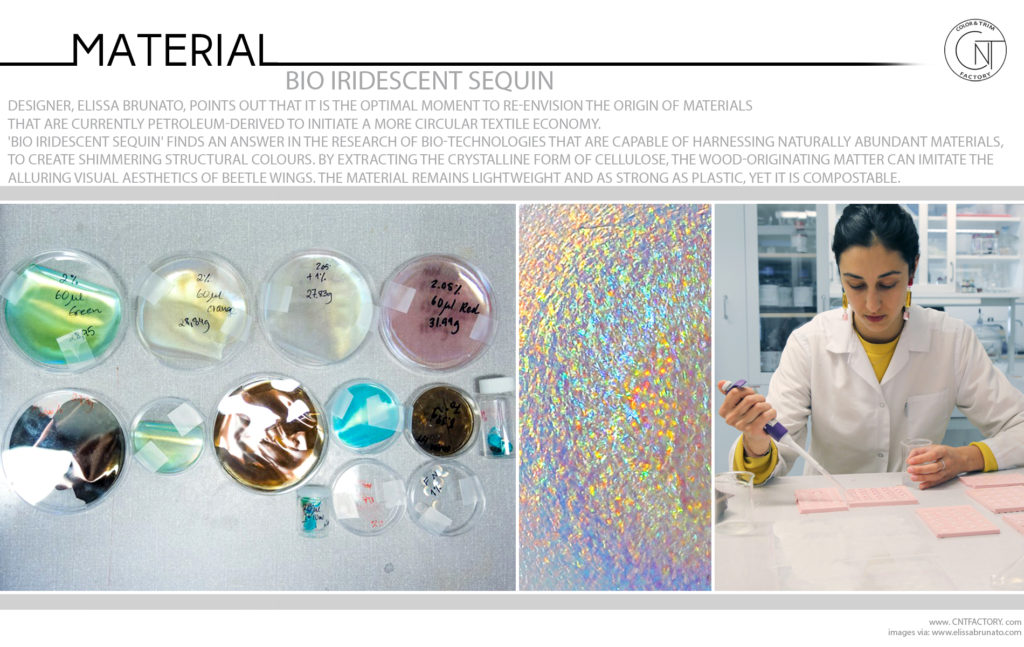
Working alongside Material Scientists Hjalmar Granberg and Tiffany Abitbol from the RISE Research Institutes of Sweden, Elissa Brunato created sequins for embroidery, that use wood’s ability to form structures that refract light. In this way, it is possible for this ‘Bio Iridescent Sequin’ to shimmer naturally without added chemicals. It is an entirely new way to approach colour and finishes within the Fashion and Textiles Industry.
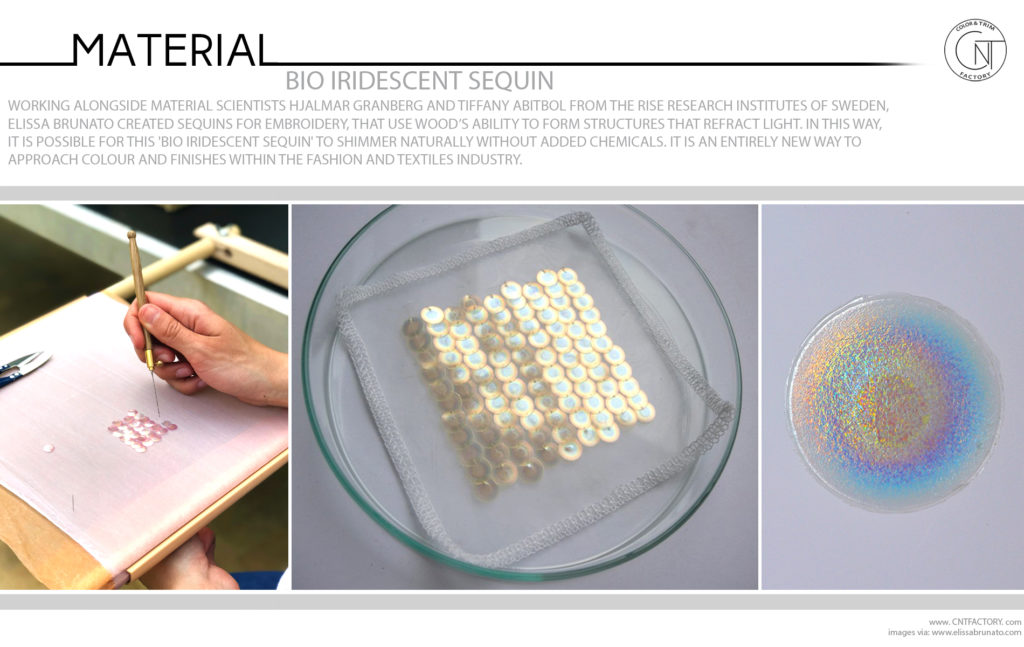
Looking into consumer patterns on a mass scale, it is impractical for embroidery to be recycled from its base fabric, consequently, these tiny plastic components are sitting in landfill and entering our environment through various waste streams.
Re-imagining the landscape of available materials that we have on this earth can allow for safer and more environmentally sustainable approaches to shimmering colour. These approaches have the potential to outshine the previous options in a way that is more forward thinking and innovative.
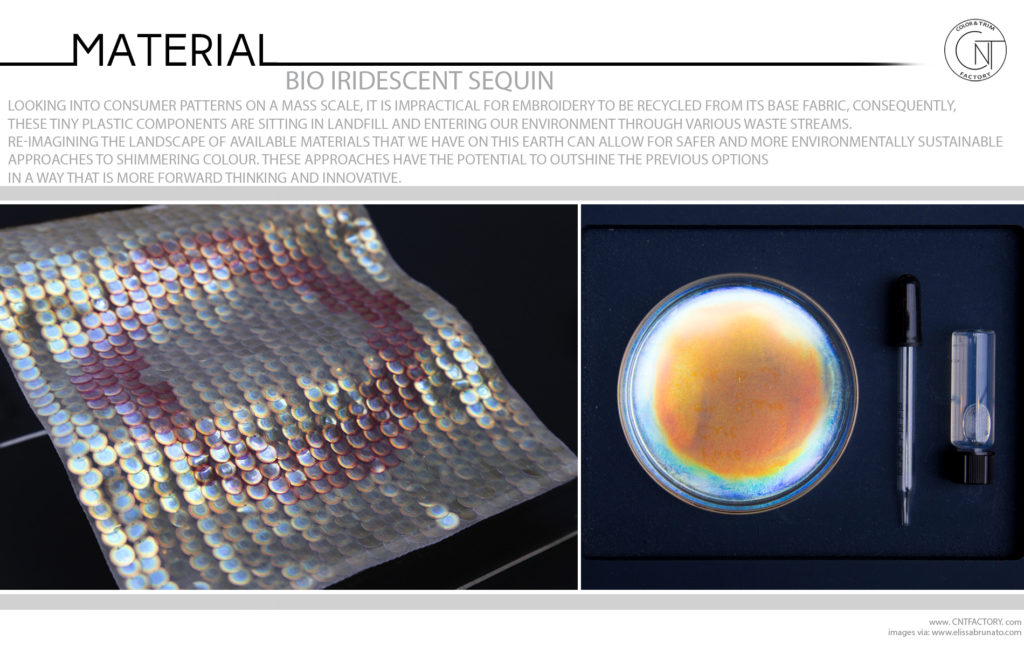
Cellulose is one of the most abundant polymers available on earth. It is one of the main ingredients plants are constructed from and you can extract it from any type of tree. The cellulose’s crystalline form refracts light and makes the sequins naturally shimmery, without the need for chemical treatment.

